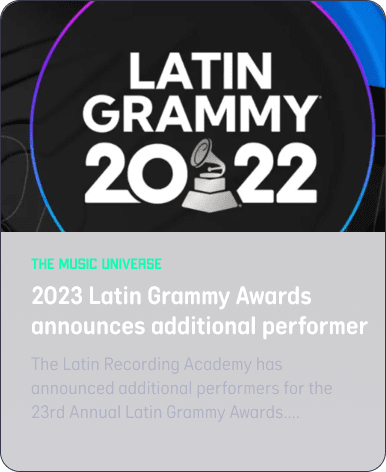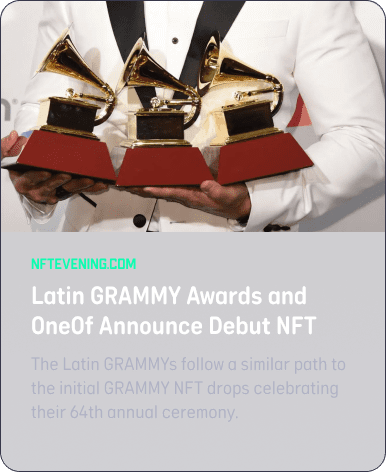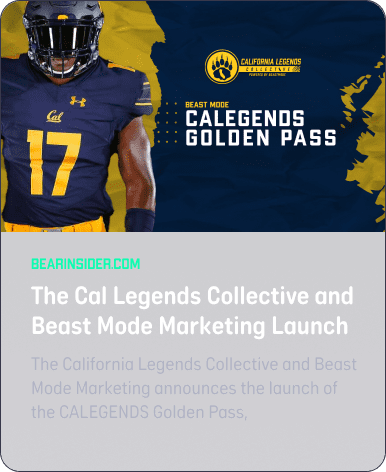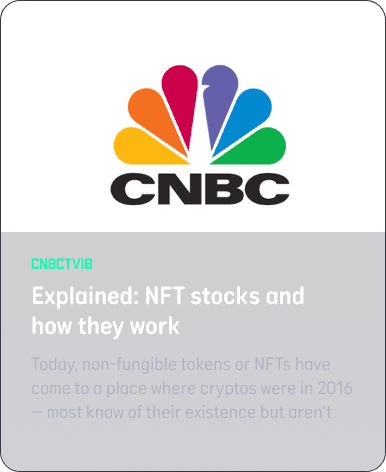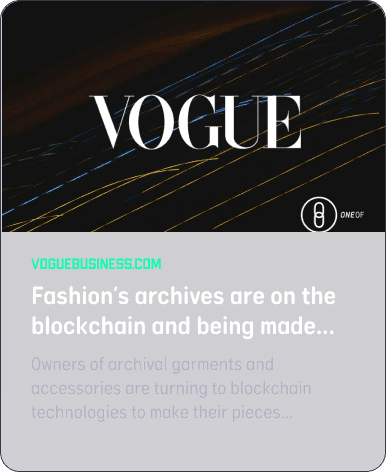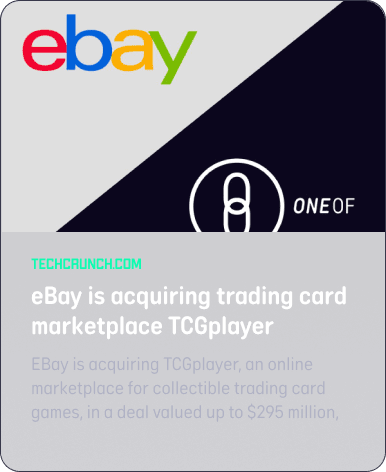Diana Sinclair: People Aren’t 'Ready to Hear' About Inequities in the Metaverse
Web 3 can open up opportunities for marginalized groups, but it’s not a silver bullet, says one leading NFT artist.

When she was a preteen, Diana Sinclair would draw and create digital characters through a social app called Draw Something. “Communities of teenagers,” she says, were on the app, where they came together by commenting under each other’s illustrations and sharing their work.
“People would do role-playing games or have long conversations in the comments,” Sinclair recalls. “It was like a fever dream.” Some would ask to swap characters with each other, occasionally even paying for the privilege via their parents’ PayPal accounts. But one day, the app announced it was shutting down, and the communities of artists that had formed there started frantically asking questions: “Do we save our artwork? Where are we going to go now?”
They eventually migrated to a different drawing app, but Sinclair, for one, hadn’t bothered to save any of her art from the original one. Now that she has gotten into non-fungible tokens (NFT), she sees how technology could have saved those now-lost drawings from disappearing into the ether.
“Digital ownership is super important,” she says. “Our worlds are getting increasingly virtual … [H]aving a record of what you do online [and being able to] look back in several years … that’s going to mean a lot historically.”
Sinclair, a visual artist whose media span photography, video, and digital and hand drawing, started exploring NFTs in February of last year. Her partner at the time was making 3D digital art, but there wasn’t much of a market or display venue for that type of work. “The [NFT] space really hit hard, especially in that community,” Sinclair says, sitting in her room in New Jersey surrounded by art supplies, sunlight streaming in the windows behind her when we talk via Zoom.
Sinclair counts herself among the first photographers and video artists to have entered the NFT realm before the big photography boom in summer 2021. To date, she’s helmed The Digital Diaspora, an art exhibition that debuted around Juneteenth [June 19] 2021 that consisted of Black NFT artists’ work appearing on Link screens all over New York City, and she created a video project paired with a previously unreleased Whitney Houston demo track in a collaboration with Houston’s estate, which together sold for more than $1 million back in December. In July, Fortune named her one of the 50 most influential people in NFTs, and TIME featured her as an artist in the magazine’s first NFT collection.
Sinclair’s first-ever NFT sold in April 2021. The photograph was part of a series called “I Am the Black Gold of the Sun” (named after a song Sinclair’s mother introduced to her), which she’d shot the previous August – one of the first photo shoots she’d ever done. About “coming into yourself and coming into your light, despite oppression and despite pain,” Sinclair says, the photograph with the same title as the series depicts a young Black man standing about thigh-deep in water, translucent yellow fabric covering his head, the sun highlighting his form.
“To me, at that point, selling wasn’t super important,” Sinclair says. Rather, being a part of a community was the exciting part about entering the NFT space. It reminded her of the kinds of interactions she’d have back on Draw Something. “It was the first time since my digital art app days that I’ve been among a community of artists that were talking all the time. There was a lot of joy and excitement,” she says. “It was really cool.”
Sinclair shortly became immersed in a community of artists selling their work as NFTs, and then in the wider NFT community on Twitter. She began using her platform in the space to curate NFT works of artists she admired through Twitter threads, “like 15 or more artworks on each one,” she says. “These are some Black artists in the space you really need to check out,” like Serwah Attafuah, LUZ and Blacksneakers.
People started getting invested in Sinclair’s curated Twitter threads, and the works she presented began selling out. It made her think: “We need to bring curation and a spotlight to artists in a grander way.”
This led to Sinclair curating her most ambitious NFT project at the time, “The Digital Diaspora.” Timed with Juneteenth, the U.S. holiday (as of 2021) commemorating the day African-American slaves in Texas were informed of their freedom in 1865, the project featured the work of Black artists from six countries. Crucially, it aimed to increase their visibility in the emerging Web 3 world, which reflects real-life prejudices that leave Black artists marginalized.
Sinclair worked with NFT marketplace Foundation and Towards Utopia, a nonprofit supporting “Black creativity,” to auction off “The Digital Diaspora” pieces. The auction helped raise funds for G.L.I.T.S., Gays and Lesbians Living in a Transgender Society, which provides health care and housing to transgender sex workers and others who identify as LGBTQIA or BIPOC in the New York City area. The Digital Diaspora artists’ works stayed up across New York City for about two weeks.
It was a “huge moment,” Sinclair says, but it also revealed an aspect of the NFT space at the time that left her feeling “bogged down.”
“It was a little bit too early,” she says. “I don’t think that people at the time were ready to hear that message and recognize that inequality was possible in this new world that was being developed.”
This describes the type of blind utopia ethos that often comes across in Web 3, particularly among those who enthusiastically believe that a decentralized internet (populated by anonymous avatars that hide users’ identities) will level the hierarchies that exist in the physical world. Using avatars like a Bored Ape or a CryptoPunk means Web 3 participants don’t have to reveal their skin color or gender, and this leads to the frankly misguided notion that those identities don’t play a part in this digital frontier.
“A lot of people are saying, ‘We’re in the metaverse, identity doesn’t exist, skin color, race, gender identity doesn’t exist,’” Sinclair says. “That’s not true.” It’s even less true when what a lot of people want to get out of joining Web 3 communities online is the real-life experiences that come with them – the in-person meetups, the parties like Ape Fest and the conferences full of networking opportunities. People still want to find others they can relate to, who share their interests and experiences. “Even though it’s about digital identity, our bodies are not going away,” Sinclair says. “And the struggles that come with our bodies are not going away.”
But when everyone is an anonymous penguin or doodle or witch, it’s harder to connect with the people who share your struggles, and sharing your struggles is one of the best ways to process and even overcome them. “You can’t be, like, ’I can identify with the struggles of Black artists, I’m going to join a community with Black artists,’” she says.
Sinclair’s currently working on a project to connect the dots between the extremely online NFT world and the physical spaces where its participants come together. She started it at the South by Southwest festival in March, setting up what she describes as a portable photo studio to take Polaroid portraits of NFT community members who attended the Austin, Texas, event.
“It’s about documenting physical identity versus digital identity,” Sinclair says. Tangible Polaroids felt like a fitting way to embody the physical aspect of the project, which she plans to mint in stages as she takes more photos at different Web 3 events, including the upcoming Consensus conference, also in Austin. Through the project, she’s already gotten to meet a wide swath of NFT enthusiasts face to face, and she has been pleasantly surprised by the variety of their interests in the space.
“In some ways I’m a bit overexposed to all these different opinions on Twitter, so it was nice to sit down and get each person’s individual thoughts about why they were there at that event,” she says. She met a 12-year-old girl “badass bitch” NFT collector and a founder of Sound.xyz, a platform where musical artists can sell their sounds as NFTs. “We had a great conversation about Black culture and music culture and bringing that to the space,” she says.
***
Despite the importance Sinclair places on identity, she took advantage of Web 3’s anonymity early on in her still-budding NFT career. Sinclair is 18 years old, 17 when she started in the space, and she didn’t want others to immediately judge her based on her age. “I really wanted to see how people were receiving me and my art for who I was, the thoughts I had and the work that I was putting out,” she says. “I didn’t want to feel like I was getting by on a crutch of, ‘Oh, she’s so young’ … and for that to become the sole narrative of my work.”
However, Sinclair’s youth helped secure maybe her most high-profile work yet. Around September, entertainment-focused NFT platform OneOf contacted Sinclair, saying it was working with Whitney Houston’s family on an art project – a video to go with a track Houston had recorded when she was 17 that hadn’t been previously released. Houston’s family was looking for the right creator to take on the job, and when Houston’s sister-in-law met Sinclair, she “fell in love” with her and her work.
She also noticed similarities between Sinclair and Houston, besides the age at which they’d be collaborating, across time, on this piece. Both valued family, community and warmth, Houston’s family talking up how bright and caring the singer was before she passed away in 2012.
Though Sinclair had listened to Houston’s music before, she didn’t grow up with it in the way slightly older generations might have. That allowed her to take the time to get to know Houston as an artist rather than as the icon she became in her lifetime. “That was nice, being able to take a step back and absorb … Whitney herself from that lens instead of just icon status,” she says. “You can lose people’s humanity a little bit when you look through that lens.”
Ultimately, youth played a big part in Sinclair’s project with the Houston estate. The family wanted Sinclair’s young age to help keep Whitney’s work relevant. “I kept saying, ‘No one needs me to keep Whitney Houston relevant,’” she says. “They just wanted her to stay modern.”
Sinclair’s work in NFTs certainly fit that modern criteria, and the way she went about creating the project further embraced youthful energy. She hired only young people – teens and young adults – to assist on set, from the stylist to the models. The set, she describes, was overflowing with “beautiful Black energy,” and she got to pay everyone’s requested rates.
It’s not easy having so much influence at such a young age (or really any age), and it has taken a toll on Sinclair. “I felt this massive pressure of Black people falling behind in this space, because there’s so much money floating around,” she says. “We’re already so far behind in the American financial structure, which is literally built to oppress Black people.”
While she feels compelled to educate people about Black artists and the importance of highlighting their work in Web 3 to get them in through barely opened doorways, doing that takes a lot of work. And Sinclair has gotten tired.
“Being so young and having all that pressure to onboard a lot of people – I wanted to do it so badly, and it’s still so important to me,” she says. “I realized, in fall and winter last year, that my mental health was really suffering.”
Despite all the talk, the magic of Web 3 is not going to automatically wipe out power structures that have been in place for centuries or even longer. With more and more “Web 2 brands” entering the space (Nikes, Adidas, and numerous fashion brands have hopped onboard), bringing along their Web 2 money and clout, they’re creating seductive opportunities for artists and builders operating in Web 3. Those brands then “turn people away from the original ethos” of Web 3, Sinclair suggests, in favor of traditional capitalist goals. “But I think people do need to take a step back and realize what it does mean to give those brands and those companies power in this space.”
Still, there’s hope for Web3, she thinks, pointing to disruptions that have taken place already in the traditional art market – like artists learning about the perpetual royalty structure built into most NFT sales contracts and asking their galleries for perpetual royalties, as well. That practice is basically unprecedented in the establishment-art world, and most artists would never have thought to request it before NFTs. “But the thing is, it’s a lot harder to track that without the blockchain,” Sinclair says.
Besides their utility in tracking royalties, blockchains also offer a sense of permanence to digital art. While the work Sinclair created as a preteen using drawing apps disappeared with those apps, her blockchain-based pieces have a lengthy lifespan ahead of them. And she’s taking that record of digital ownership seriously, having bought back one of her very first pieces, the titular image from her “I Am the Black Gold of the Sun” series.
“[When] I was younger, I was very hard on myself, so I didn’t save any of my artworks,” Sinclair says of her drawing app days. Now, she’s proud of her work, and she has access to technology that lets her keep it and show it forever.
